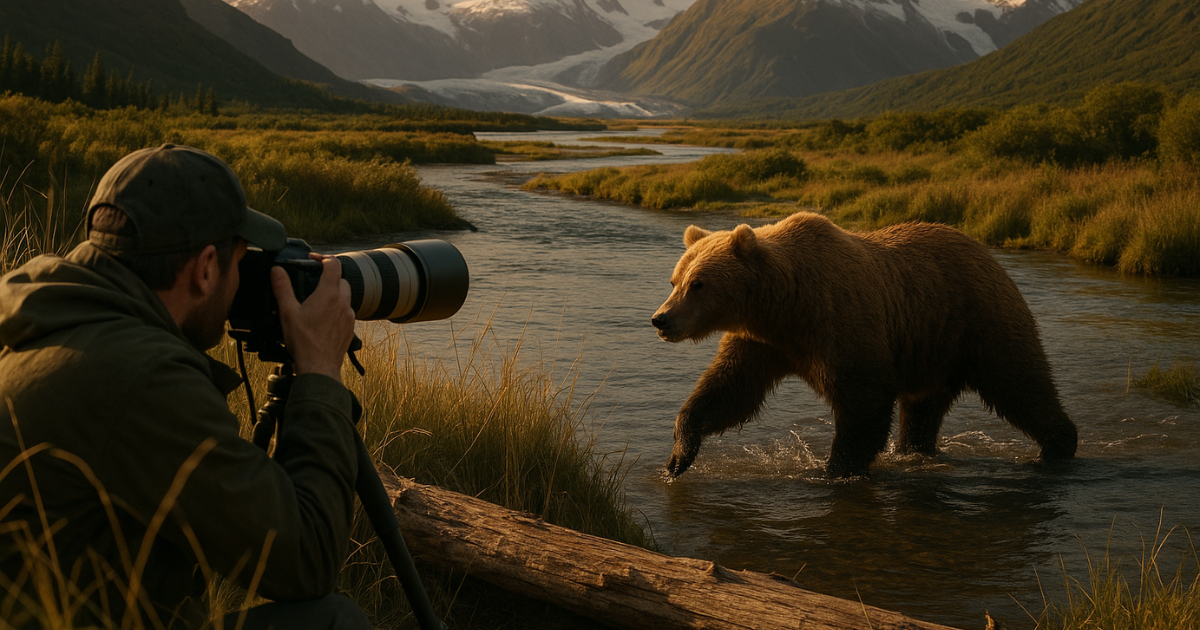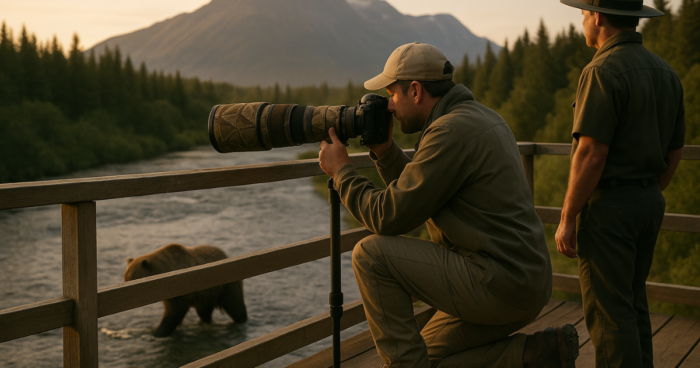Photographing bears in the wild is one of the most thrilling and rewarding experiences an Alaskan tour can offer. With breathtaking backdrops and raw wildlife encounters, it’s no wonder many travelers bring a camera along. But knowing how to photograph bears on Alaska tours takes more than just snapping the shutter, it requires timing, patience, and preparation. The unpredictability of wildlife encounters on Alaskan tours means every shot must be earned, not taken. Whether you’re a seasoned photographer or a curious traveler, capturing these iconic animals demands respect for both nature and the moment.
Preparing for Your Bear Photography Adventure
The key to successful bear photography starts with choosing the right tour. Bear viewing tours in Alaska are designed to bring you safely into the bears’ natural environment while minimizing disturbance. Peak months for bear activity, especially around salmon runs, are typically July through early September. Booking in advance ensures access to the most photo-rich locations like Brooks Falls, Silver Salmon Creek, and Chinitna Bay.
Many wildlife photography tour guides in Alaska specialize in helping photographers capture once-in-a-lifetime images. Their local knowledge and understanding of bear behavior add layers of safety and strategy to your trip. Guided tours also reinforce ethical wildlife practices, keeping you safe while protecting the animals and their habitat.
Essential Gear for Photographing Bears in Alaska
Photographing bears in Alaska’s backcountry means packing for both performance and protection. Essential Alaska bear safari photography gear includes a DSLR or mirrorless camera with a telephoto lens (300mm or more), a sturdy tripod or monopod, and weather-resistant bags. Don’t forget spare batteries, memory cards, microfiber cloths, and rain covers, Alaska’s weather can shift quickly, especially near coastal bear hotspots.
For the best camera settings for wildlife photography, prioritize fast shutter speeds (1/1000 or faster) to freeze bear movement. Use aperture settings around f/5.6–f/8 for depth of field, and adjust ISO as lighting conditions demand. If you’re shooting in burst mode, switch to continuous autofocus (AI-Servo/AF-C) to track fast-moving bears as they hunt, play, or interact naturally.
Techniques for Capturing Bears in Their Natural Habitat

Successfully capturing bears in their natural habitat requires patience, awareness, and the right moment. Always be ready, bears may appear suddenly along riverbanks or meadows. Pay attention to body language and movement; a slow-moving bear could be stalking fish or preparing to cross your frame. The best images often come from low angles and natural framing, using foliage or rocks to add dimension.
Sharpen your grizzly bear photography techniques by anticipating behaviors. Bears tend to follow patterns, fishing, playing, or sparring during salmon season. Stay still, let the moment unfold, and avoid overshooting. Single, intentional shots often produce better results than random bursts. Practice tracking with your lens to improve timing and focus.
During peak bear photography during salmon run seasons (July–September), aim to shoot from riverbank locations where fish are abundant. Look for bears swiping fish mid-air or leaping into pools. These action shots tell powerful stories, capturing the primal dance of predator and prey in pristine Alaskan wilderness.
Lighting and Environmental Conditions
Mastering lighting conditions in the Alaskan wilderness can elevate your bear photos. Early mornings and late evenings, known as golden hour, offer soft, warm light that enhances fur detail and background tones. This is also when bears are most active, creating natural opportunities for action and behavior shots.
On cloudy or overcast days, diffused light softens shadows and reduces harsh contrast, which is ideal for close-ups. Adjust your exposure compensation (+1 stop) to avoid underexposing darker bear fur. Always keep your histogram in check and shoot in RAW for flexible post-processing.
Safety First – Photographing Bears from a Distance
Understanding the safe distance for photographing bears is essential for both ethical reasons and personal safety. Always stay at least 100 yards (91 meters) away from bears. A zoom or telephoto lens allows for intimate portraits without intruding on the animal’s space or behavior.
Respect park regulations, follow your guide’s instructions, and avoid any movement that may startle or provoke. Practicing ethical wildlife photography means keeping the focus on the animal, not the shot. Never bait, call, or chase wildlife. Responsible behavior ensures that bears remain wild, and that other travelers can enjoy safe, natural encounters.
Pro Photography Tips for Alaskan Wildlife
When practicing photography tips for Alaskan wildlife, remember that the best shots often come with patience. Let the scene develop organically. Use natural frames like trees or rocks to create depth, and keep your horizon level to balance landscape composition.
Enable silent shutter mode when possible to minimize disruption, especially during close wildlife moments. Capture emotion by waiting for eye contact, family interaction, or powerful gestures. Whether it’s a fishing bear mid-leap or a cub following its mother, action shots and strong foreground depth add drama and storytelling to your images.
Conclusion
Whether you’re a beginner with a borrowed lens or a seasoned pro with a full kit, learning how to photograph bears on Alaska tours will leave you with more than just photos, it’ll give you unforgettable memories and a deeper respect for nature. Every click of the shutter should reflect both the thrill of the moment and the importance of preserving it. Let the majesty of iconic Alaskan bears inspire you, and always aim to leave the wilderness as wild as you found it.


